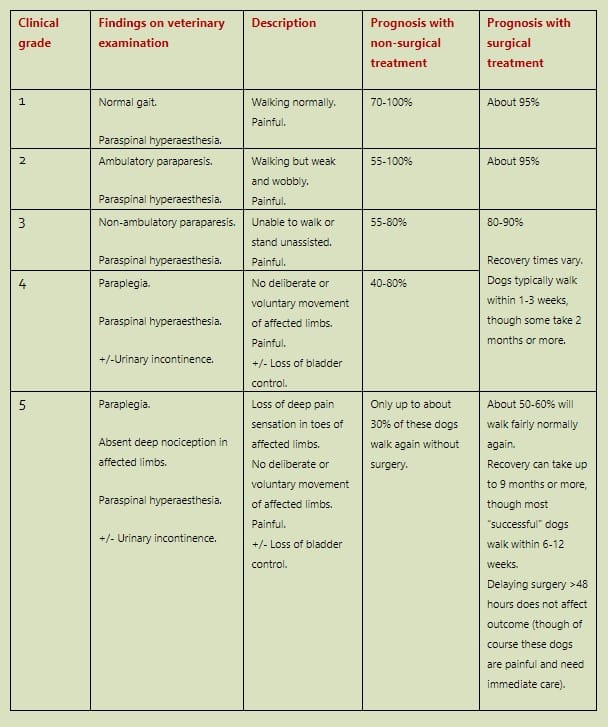Over the years as IVDD has become prevalent throughout the Dachshund community, a clinical grading scale eg: 1 -5 has proven to be useful in working out the dog’s prognosis (how likely they are to get better) and can also make it easier to record any improvement or deterioration.
Various grading systems have been used worldwide. One that is often used in Australian & UK practices has grades from 1 to 5, with grade 1 dogs being most mildly affected, and grade 5 dogs being most severely affected.
Of course, some vets/specialists do a great job of assessing, treating and monitoring IVDD dogs without giving them a grade or a number. It should also be noted that no two cases are the same and clinical signs appropriate to the grade don’t always indicate the final outcome. As we say, never say never to a Dachshund.
A clinical grade is extremely helpful for owners to assist in making an informed decision so that an appropriate management plan can be put in place whether that be a conservative or surgical pathway.
At grades 1 and 2, conservative (non-surgical) treatment is often a sensible first choice, though surgery may be indicated if the dog does not improve. In grades 3-5, surgical treatment gives a better chance of a successful outcome.
Stage I: Mild pain and usually self-correcting in a few days
Stage II: Moderate to severe pain in the neck or low back area
Stage III: Partial paralysis causing trouble walking and/or uncoordinated movements
Stage IV: Paralysis but with the ability to feel
Stage V: Paralysis and the loss of all feeling
It is important that any dachshund that is displaying any signs or symptoms of IVDD be urgently referred to and assessed by a specialist vet who can accurately assess the grading of IVDD.
5-point grading scale for Dachshunds with IVDD courtesy of Marianne Dorn BVM&S PGCert SART MRCVS.

